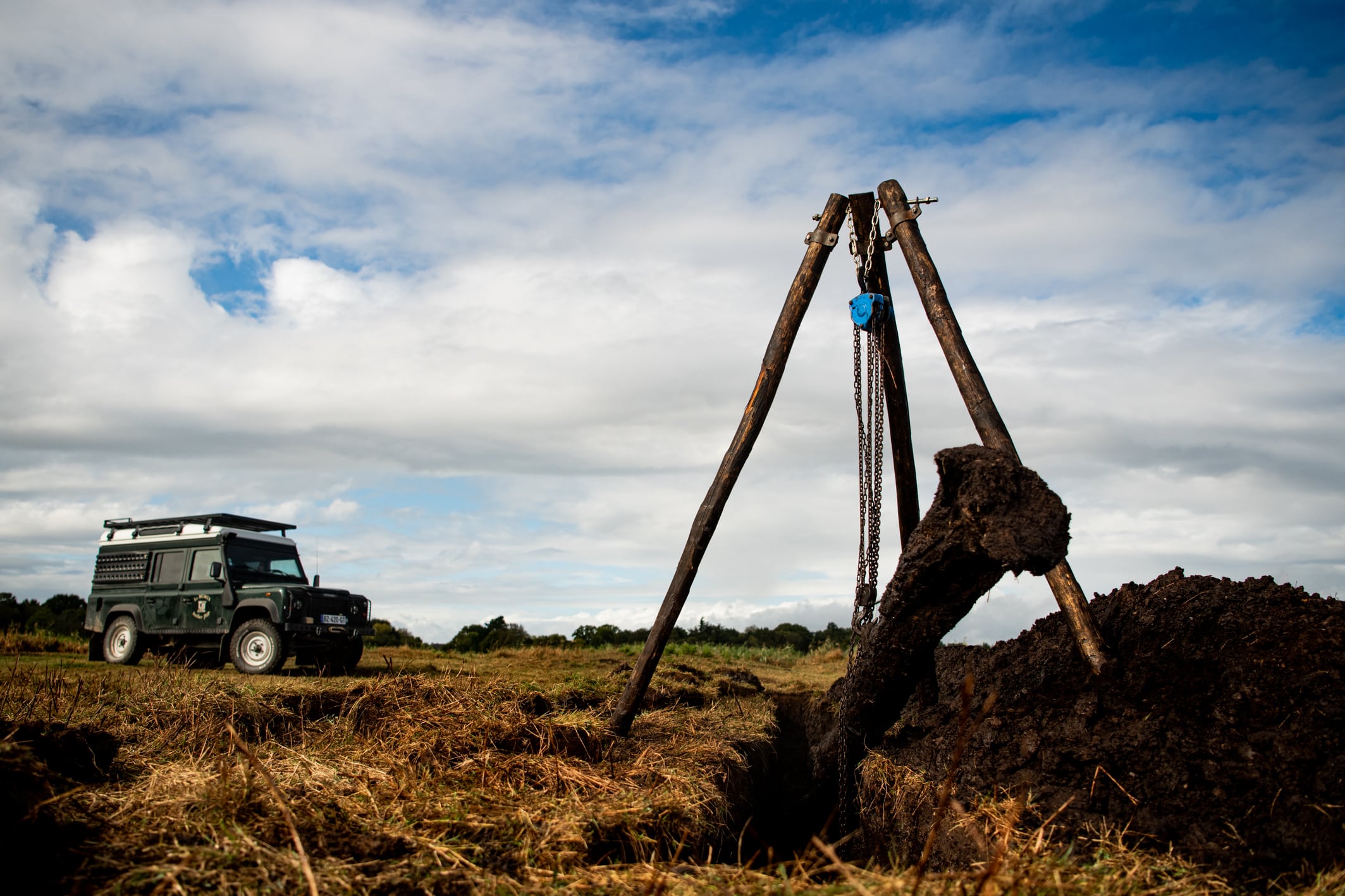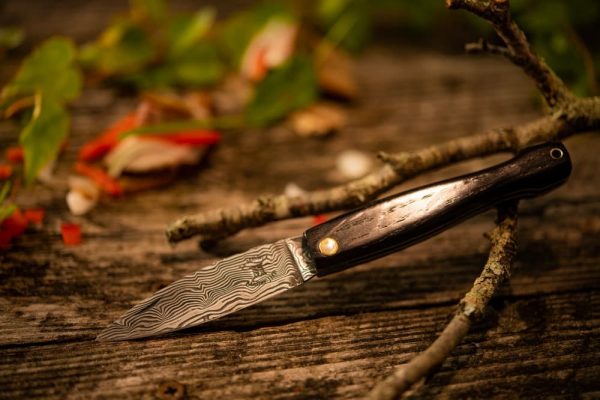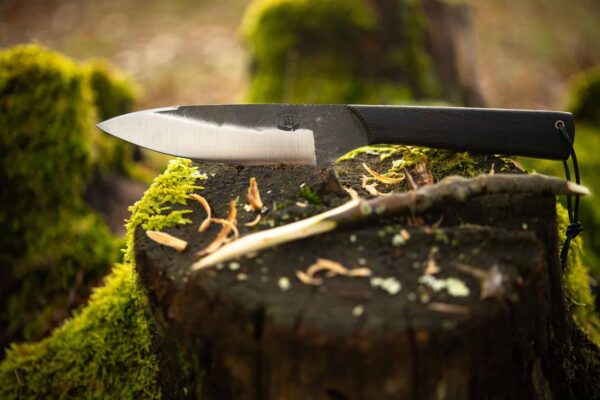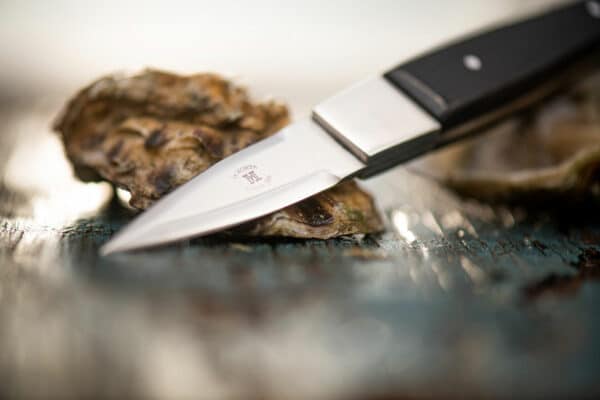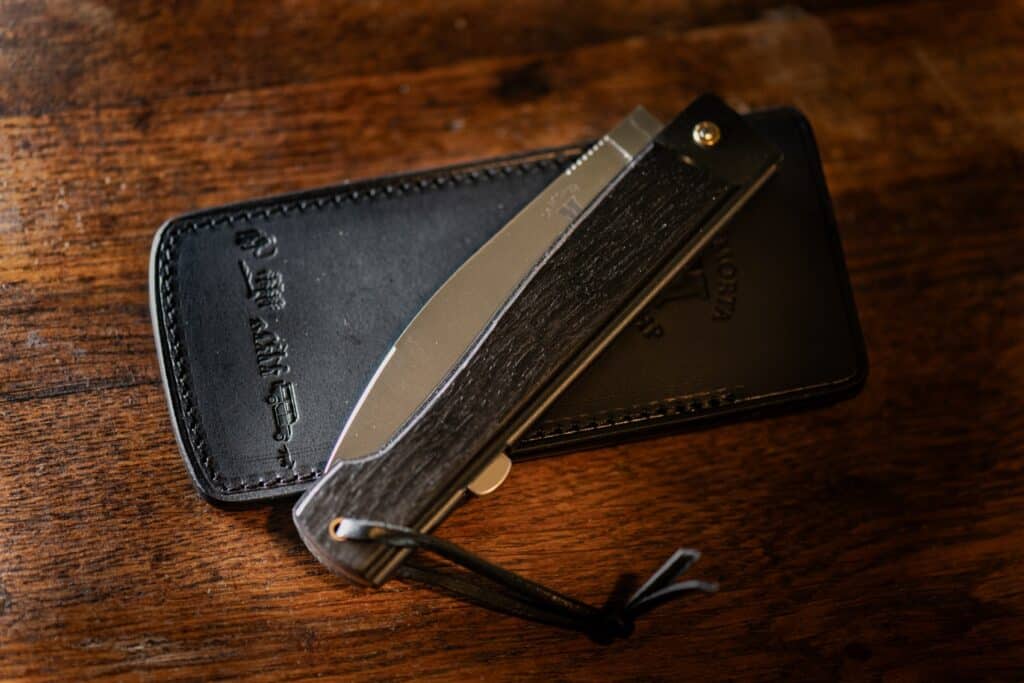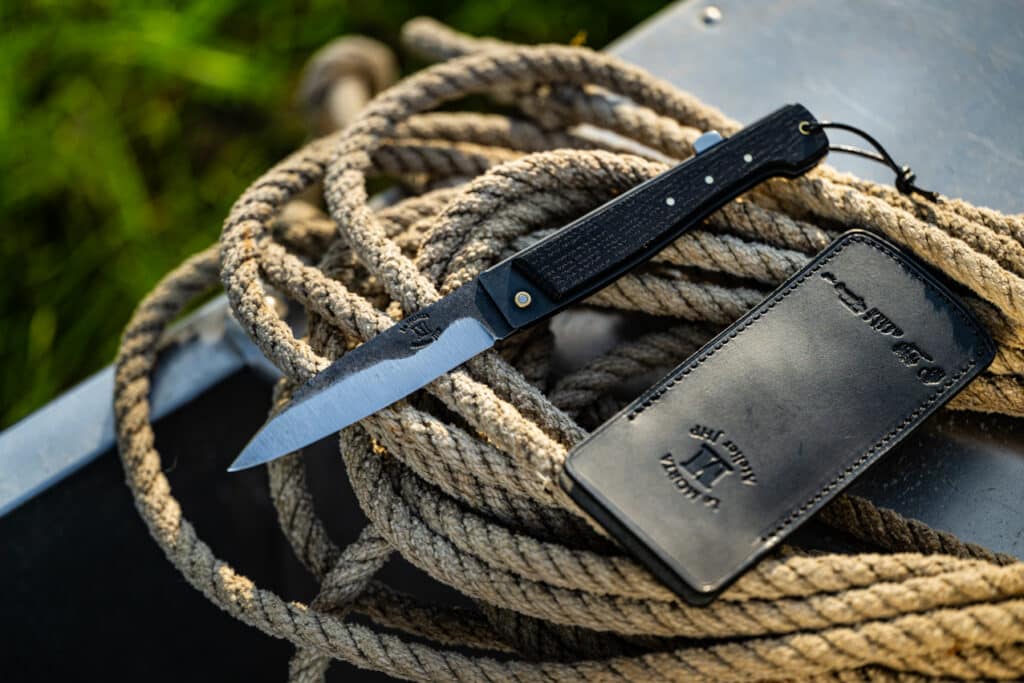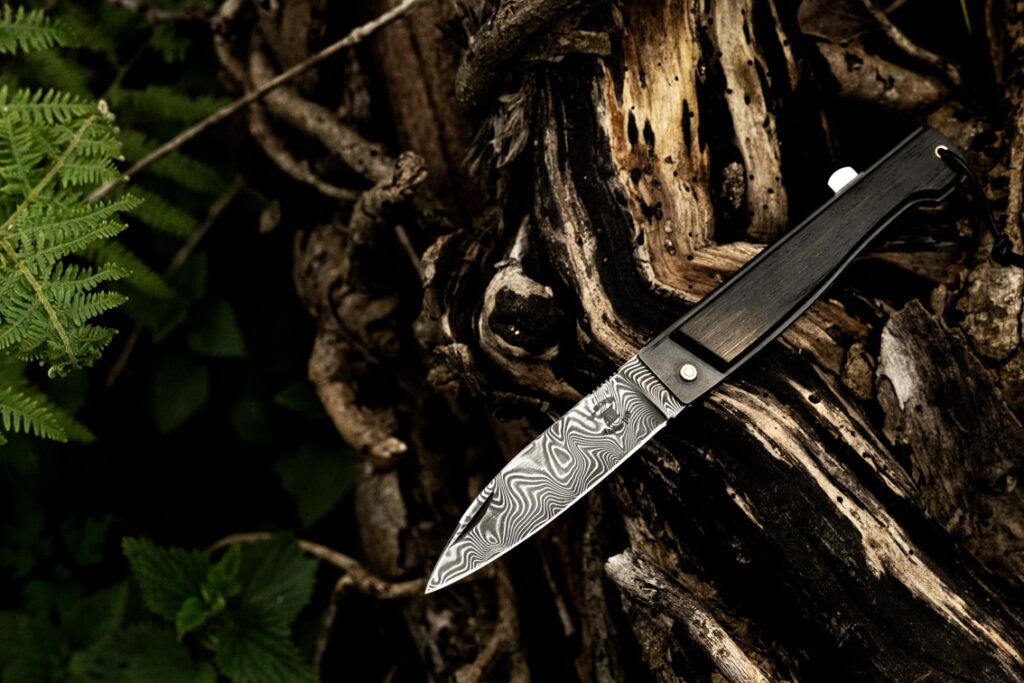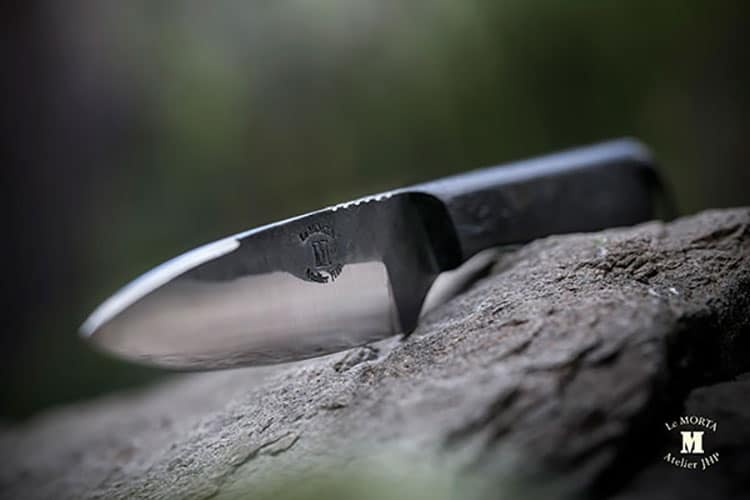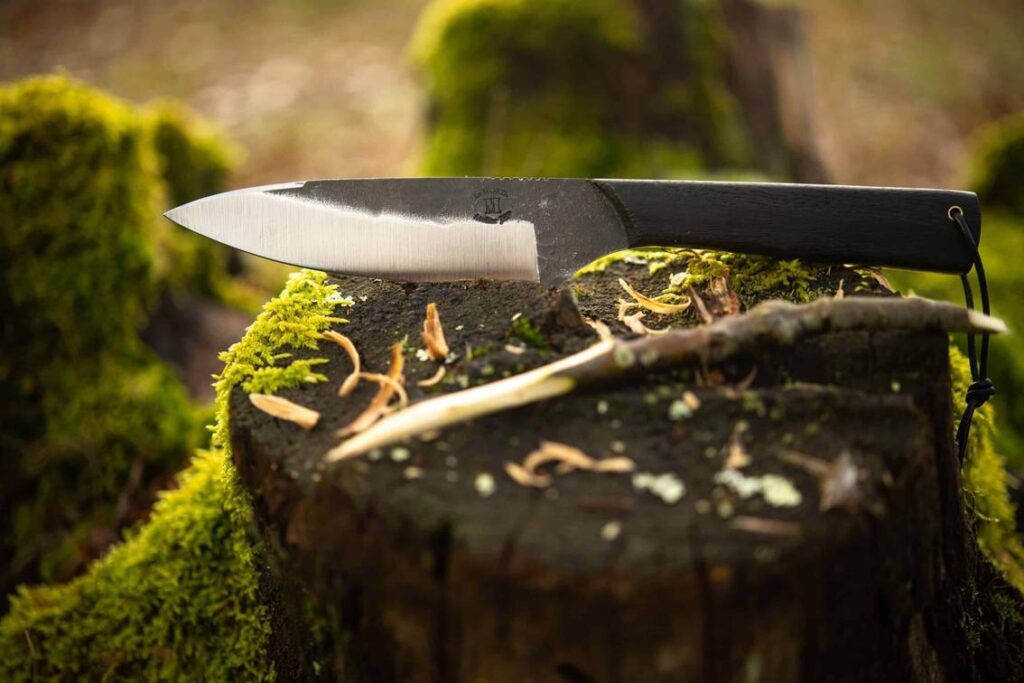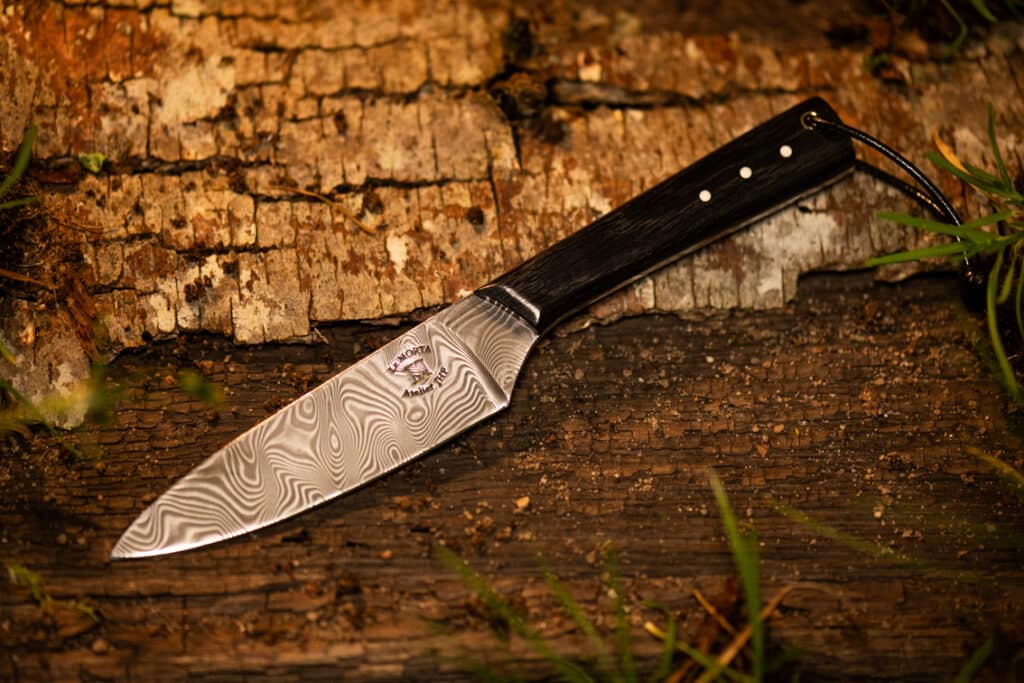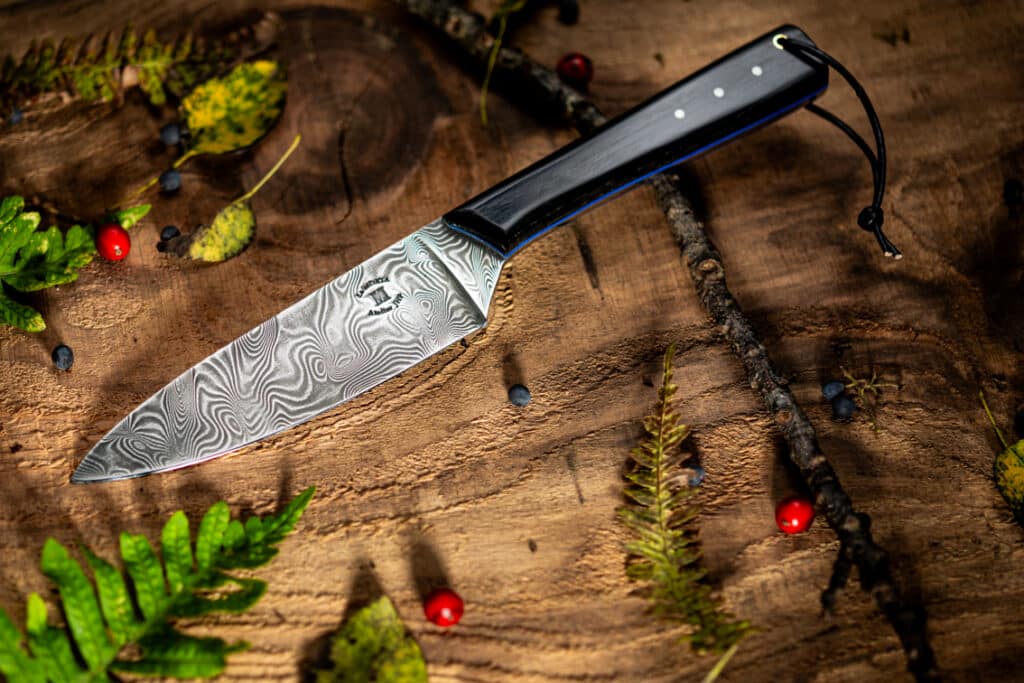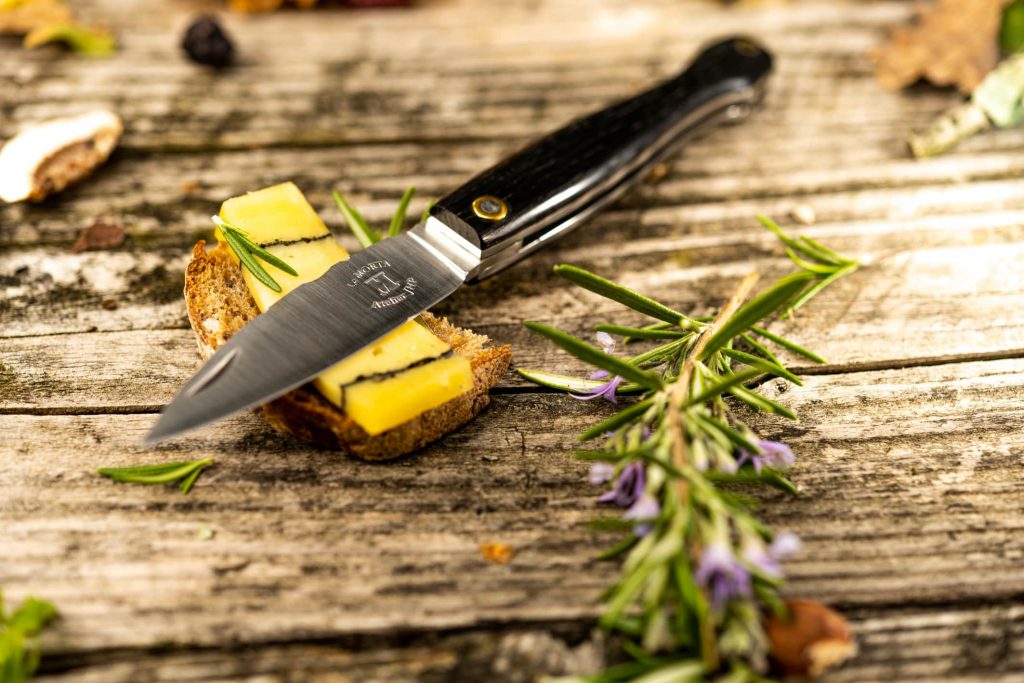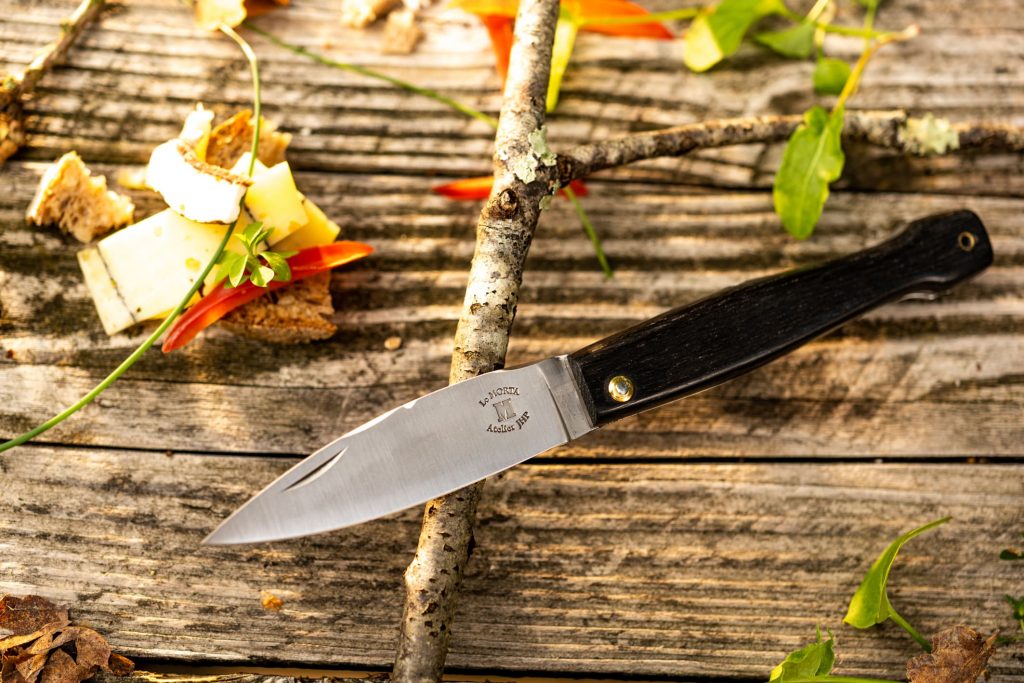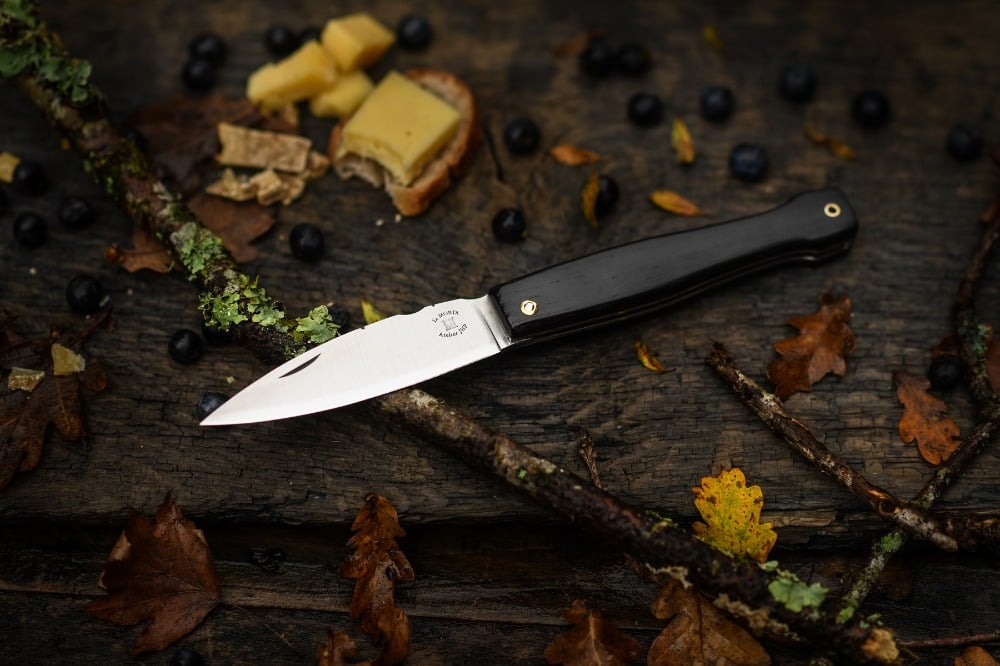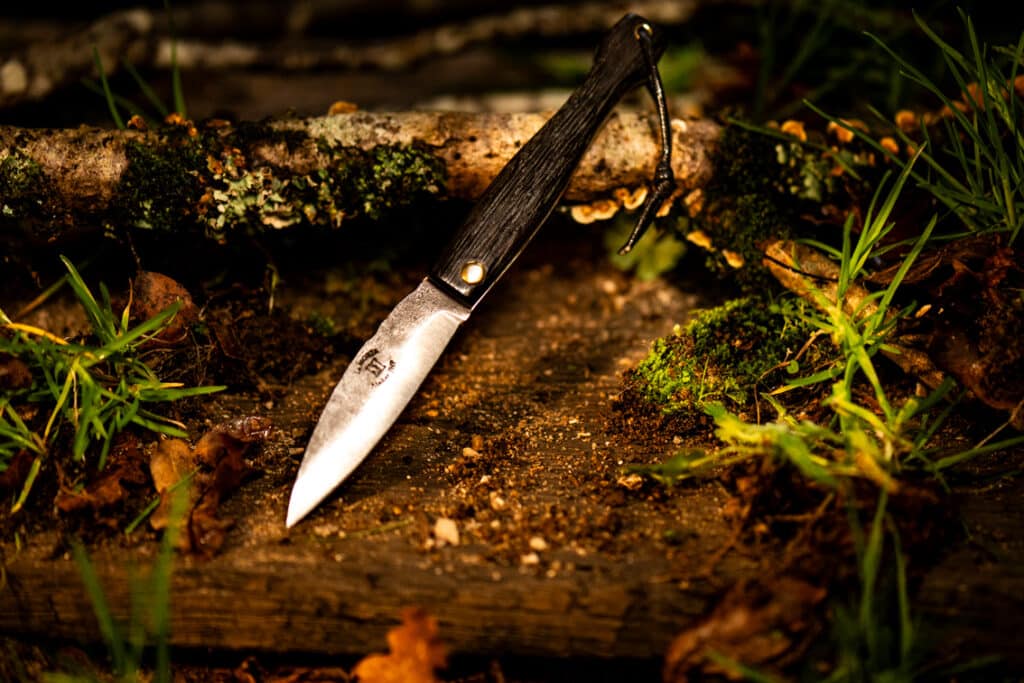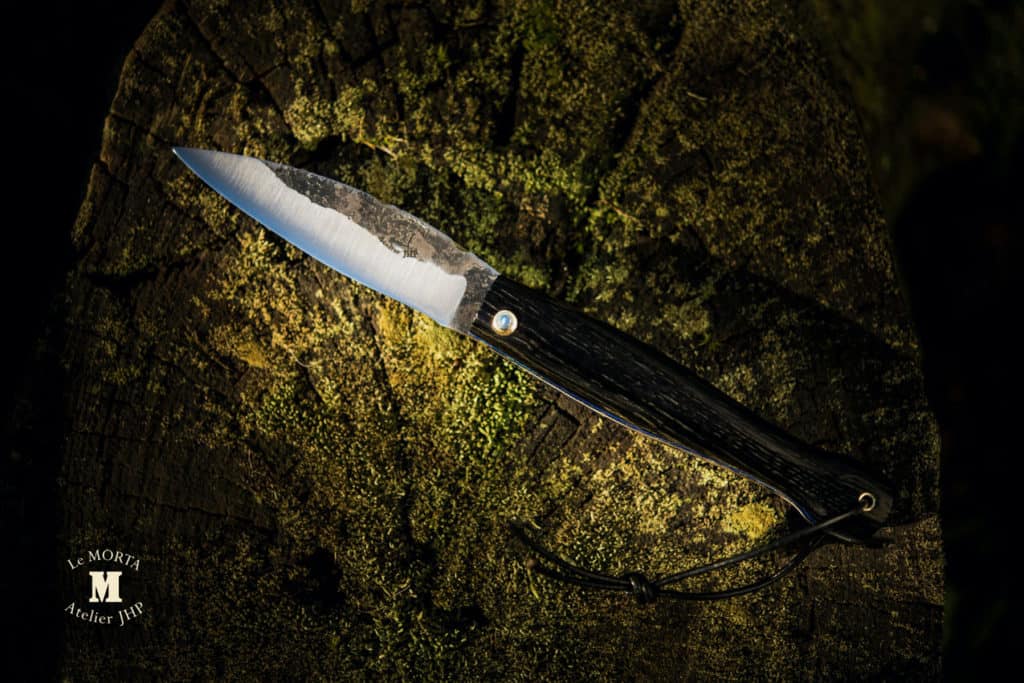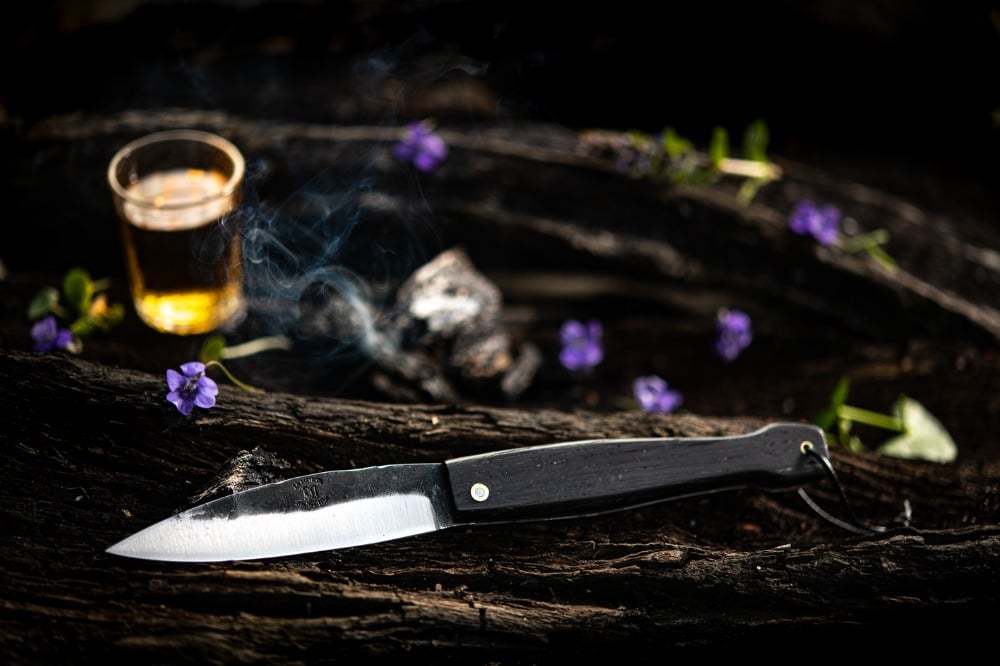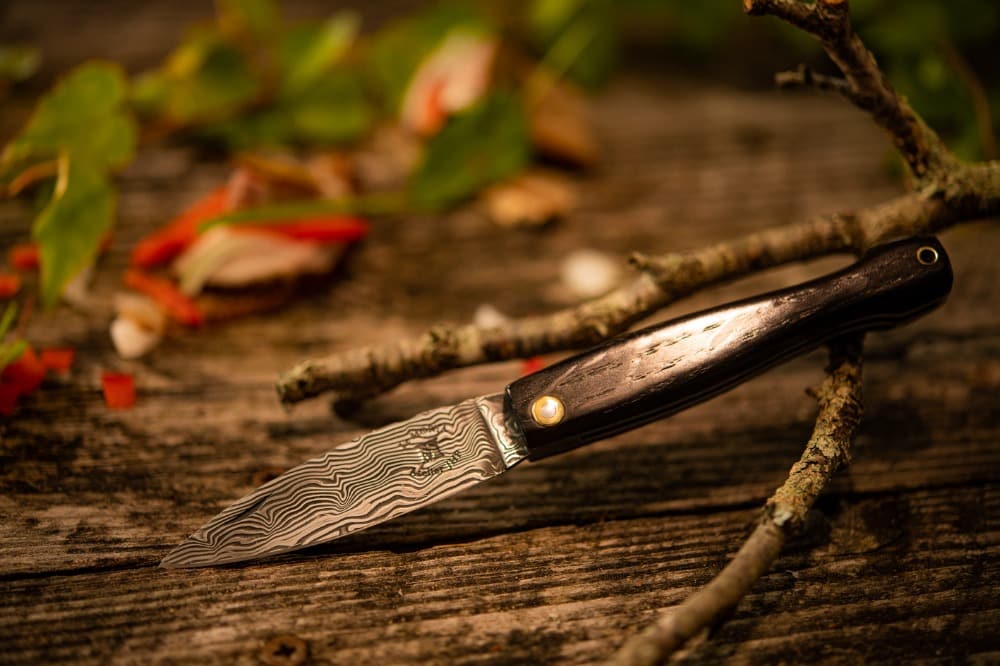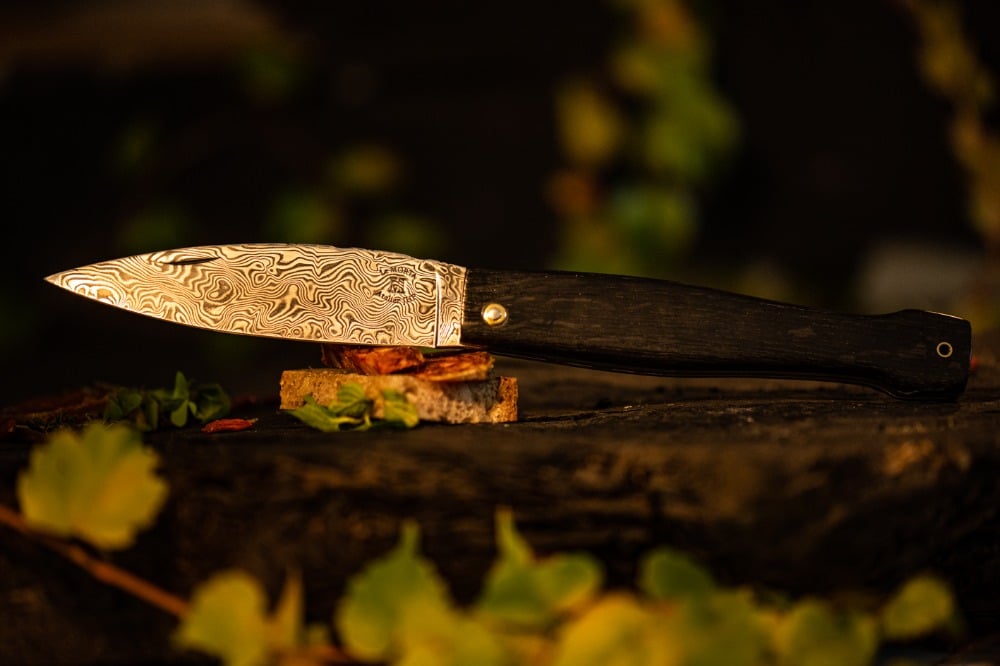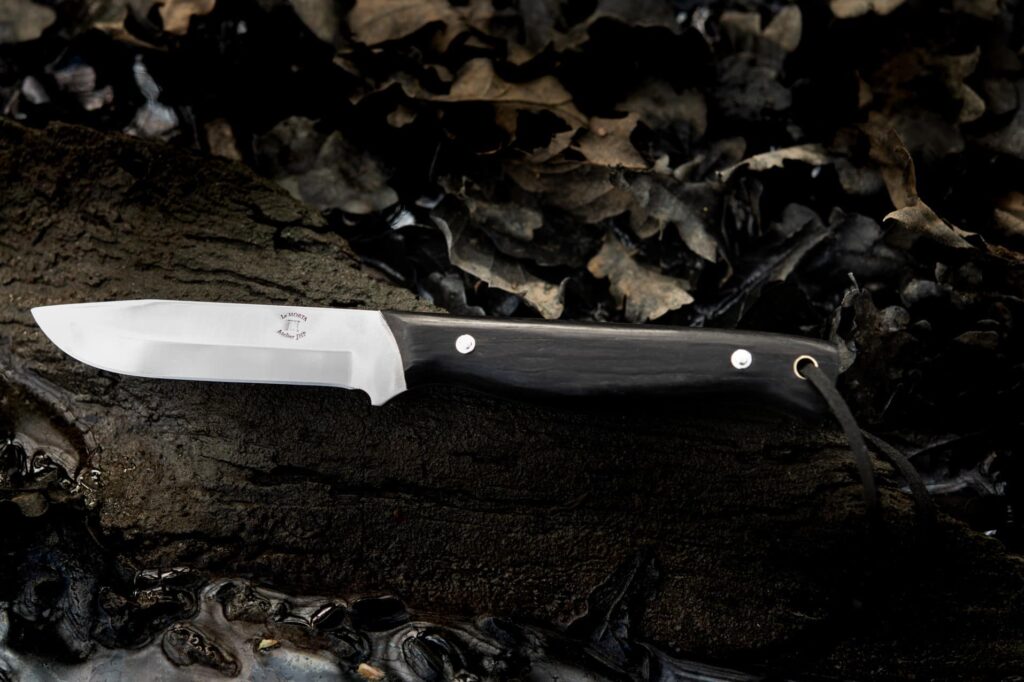Petrified, silicified, call it what you will, fossilized wood takes on the appearance and hardness of stone. This is because sediment-rich water has infiltrated it and crystallized its cells. The color of this million-year-old plant depends on the soil’s iron, silica, manganese and other mineral content. Petrified Forest National Park in Arizona is one of many sites worldwide where mineralogy enthusiasts can admire these tree trunks frozen in time. In France, Grand’Combe offers a lovely walk through a stone forest. In Loire-Atlantique, it’s a wood in the process of fossilization, a wood 5 millennia old, the Morta, that the Brière offers to craft lovers. Let’s discover together how nature creates such jewels.
Silicified wood: what is the petrification process?
Wood fossilizes when minerals replace organic matter. Its atomic structure is partly preserved, but it becomes stone. Petrification begins if the buried tree is covered with sediment-rich soil and deprived of oxygen. Water then seeps into the wood and crystallizes its cells.
Let’s go back some 20 million years, to the Neogene* era.
A reminder of the major geological eras at the end of this article 💡
Fossilized or petrified wood is created from fallen trees in silica-laden marshy soil, hence one of its nicknames: silicified. Buried beneath a layer of sediment, the wood feeds on the nutrients contained in the soil, preventing it from rotting.
The minerals crystallize and harden into stone. Wood is transformed into rolled stone polished by time.
Some even older fossilized wood comes from the Triassic period (250 to 200 million years ago).
During the Jurassic period, trees coexisted with dinosaurs, which, weighing up to the equivalent of 15 elephants, regularly toppled immense forests. Mineralogical and geological upheavals, and the cracking of the earth’s crust, contributed to this deforestation.
Volcanic ash, rich in mineral salts, mixes with other mineral compounds during floods. Silica insinuates itself into tree trunks via the sap pathway. This gives rise to fossilized trees made of silicates and quartz. Wooden cavities can be found filled with gems such as agate, opal or amethyst.
Did you know 😉?
The word petrified comes from the Latin words petra « stone » and facere « to make ».
Recognizing fossilized wood: chemical composition and colors
Petrified wood is colored according to the minerals (chalcedony, agate, calcite) inserted in its cellular cavities.
Its rare beauty therefore depends on the oxides present in the soil. The content of each creates unique, random color palettes.
Here’s how ores tint fossilized wood.
- Iron oxide ➡️ red
- Iron ➡️ green
- Sulfur ➡️ yellow
- Hematite ➡️ red and pink
- Chromium ➡️ light green
- Vanadium ➡️ bright green
- Pure silica ➡️ white
- Carbon or pyrite ➡️ black
- Manganese oxide ➡️ black
- Manganese dioxide ➡️ violet and blue
- Silicon dioxide ➡️ gray.
The patterns can be explained by the porosity of the wood at the time of immersion.
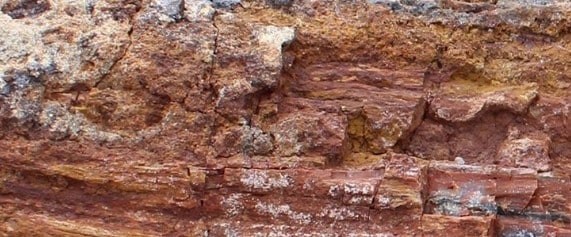
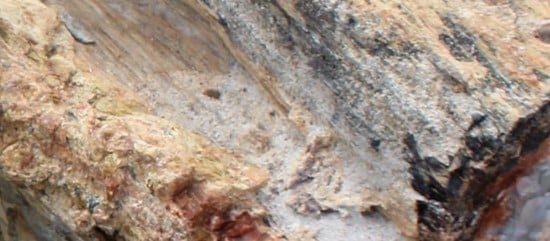
Examples of petrified wood. Image credits: https://nps.gov/pefo/index.htm
Where can you find petrified wood?
In North and South America
There are a number of sites to delight petrified wood fans.
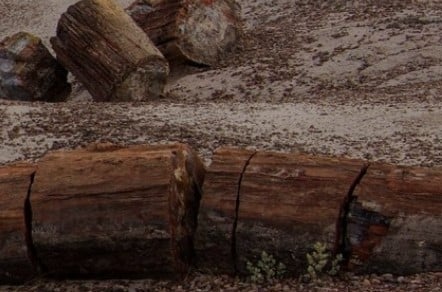
- Petrified National Park
- Photo credit: Petrified National Park
- Alberta and Axel Heiberg Island, Canada
- Rio Grande do Sul in Brazil
- Puyango in Ecuador
- Yellowstone National Park, USA
- Petrified Forest National Park in Arizona, USA, protects fossilized wood (Triassic fossils) and strictly controls its extraction.
Lithodendron magazine, sponsored by scientists and park officials, publishes the results of their archaeological, biological, geological, historical and paleontological research.
Discover Petrified Forest National Park in Arizona
In Africa and the Middle East
The African continent abounds in forests of fossilized trees.
- The In Salah region in Algeria.
- Riyadh, Saudi Arabia
- El Maadi in Egypt
- El-Kourrou in Sudan
In Asia
Asia is no exception, with its fair share of fossil discoveries.
- Chinchilla in Queensland, Australia
- Xinjiang and Dzoungarie in China
- Ban Tak Forest Park in Thailand
In Europe
Here are a few places to visit for collectors of mineralogy and fossilized wood.
- Chemnitz Natural History Museum, Germany
- Lesbos Island, Greece
- Hoegaarden in Belgium (take the opportunity to taste the beer 😉 )
- Dorset in England (yes, we’re talking geographical Europe here, not political 😉 ).
In France, at Grand’Combe in the Gard region
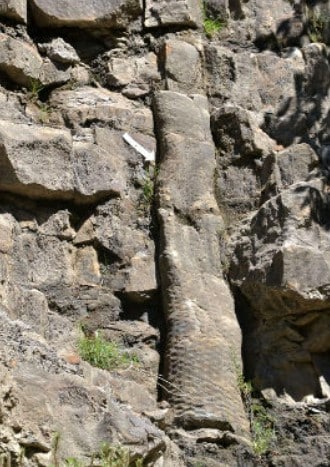
The petrified wood forest of Champclauson, a fossilized Carboniferous site, features trunks still in a living position.
Doesn’t it look like it’s looking down on us from the top of its millennia?
In Loire-Atlantique, 5,000-year-old wood is being fossilized
Nature’s gift to us in the Brière region is a wood in the process of fossilization. Strictly supervised by the relevant authorities, its extraction has enabled a number of craftsmen to bring it back to life.
Morta Knives and other lovers of fine materials maintain their fascination with this noble material.
Morta is reincarnated in :
- knife handles ;
- jewelry in wood, silver and semi-precious stones ;
- chess sets;
- contemporary sculptures and paintings.
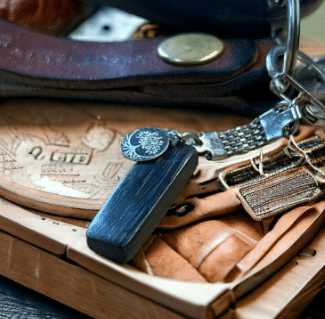
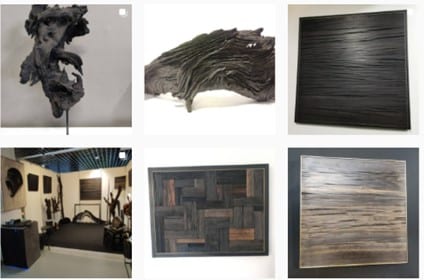
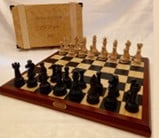
I’m discovering the collection of knives with thousand-year-old wooden handles.
Morta: a Brière marsh oak in the process of fossilization
As we have seen, Morta is a wood in the process of fossilization. It comes mainly from oaks, but also from a few birch and chestnut trees. Locked in and protected by peat for 5,000 years, it has become mineralized and loaded with silica.
The creation of the Brière region at the origin of Morta
The Brière oak forest dates back to the Neolithic period (4,500 BC). Up until the year 0, the region was subject to the ebb and flow of seawater and freshwater inland. These movements created a basin in which mud and marshland developed.
It was around 2,300 BC that the first oak trees collapsed. A second generation sank around the year 1000. A further rise in water levels helped bury the tree trunks in black peat.
From then on, the Brieron soil served as a natural sarcophagus for the tree trunks, which in an anoxic environment (lack of oxygen) fed and mineralized. Instead of destroying and rotting, it becomes harder and more noble.
Morta’s specific color and reflections come from the combination of black and brown peat. The high silica content explains its almost ebony hue.
Morta and Brière
Morta and Brière cannot be dissociated.Morta is a word from the Briéron dialect. It is found in literature, notably in Alphonse de Châteaubriant’s 1923 novel La Brière, and in regional tales.
The Brière region remains strongly attached to Morta and the peat industry. Peat (which results from the decomposition of plants sheltered from the air) reflects a precious local culture. Peat was used daily for heating and cooking.
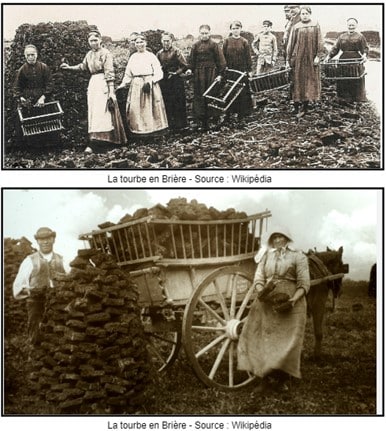
The first Morta trunks were discovered during the peating process.
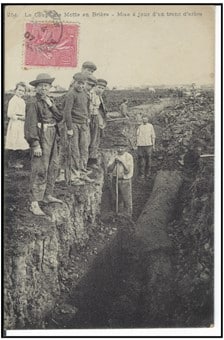
In the Brière region, morta was used to build thatched cottages and for heating. Today, its extraction is strictly regulated by the Commission Syndicale de la Grande Brière Mottière, in agreement with the Brière Regional Nature Park and biodiversity services.
PS: our visitors often ask us about “morta wood”. Let’s just say Morta. Are you talking about oak wood 😉?
As our favorite cutler likes to say, slip millennia of history into your pocket.
Fossilized wood: lithotherapy benefits
In lithotherapy, fossilized wood is said to have the emotional and physical virtues of an anchoring stone. This is why petrified wood stones can be found on so many items of jewelry.
Like other red or black stones (smoky quartz, sunstone, jasper), this wood stone is associated with the root chakra.
Petrified wood provokes an energetic process that :
- balances energies ;
- helps patience, let go and reduce stress;
- calms the flow of thoughts;
- eliminates the automatic mode of functioning;
- promotes freedom of action;
- improves memory ;
- restores intuition.
On a physical level, fossil wood :
- promotes physical growth, as it protects bones and relieves pressure on joints and ligaments, thanks to its quartz, amethyst and agate composition;
- stimulates digestion (liver, spleen) and basic metabolism;
- provides vitality and combats chronic fatigue.
Would you like some more?
Did you know 😉?
A fossil wood stone can be purified in clear water (4-5 hours). It recharges in sunlight.
The great geological periods
As promised, a reminder of the major geological eras:
The Cenozoic era began 65.5 million years ago. It comprises three periods:
- Paleogene (65.5 to 23 million years ago) ;
- the Neogene (from -23 to -1.8 million years ago) ;
- the Quaternary, in which we are still living today.
The Cenozoic is the 4th major geological era.
It follows :
- Precambrian (4,500 million years; first forms of life) ;
- Paleozoic (540 million years; first vertebrates, invertebrates and plants) ;
- Mesozoic (250 million years; disappearance of dinosaurs, appearance of mammals and fish as we know them today).
Fossilized, petrified or silicified wood thus has its origins in the encounter between a tree trunk and nutrient-rich soil. Deprived of oxygen, it doesn’t rot. On the contrary, it feeds and transforms itself into minerals. The Morta, still young among its plant dinosaur counterparts, is still in the process of fossilization, much to our delight. Indeed, the Morta is our raison d’être as cutlery craftsmen and women.
😉 Hey, did you notice? We refrained from making the joke about the wood petrified with fear in front of the crowd of its delirious fans.🪵😱😂
Article summary
What is fossilized wood and how is it formed?
Fossilized wood, also known as petrified or silicified wood, is wood whose organic matter has been replaced by minerals over millions of years. This process, known as petrification, occurs when fallen trees are buried under a layer of sediment and deprived of oxygen.
Water rich in minerals such as silica seeps into the wood and crystallizes its cells, transforming the wood into a stone composed of silicates and quartz.
This process preserves the wood’s atomic structure while transforming it into a mineral.
What different colors can fossilized wood take on, and why?
The colors of fossilized wood vary according to the minerals present in the soil where it was formed.
Here are a few examples of minerals and their effects on the color of fossilized wood:
- Iron oxide: Red
- Iron: Green
- Sulfur: Yellow
- Hematite: Red and pink
- Chromium: Light green
- Vanadium: Bright green
- Pure silica: White
- Carbon or pyrite: Black
- Manganese oxide: Black
- Manganese dioxide: Violet and blue
- Silicon dioxide: Grey
These colors and patterns are also influenced by the porosity of the wood when immersed in mineral sediments.
How can we recognize fossilized wood and what are its chemical components?
Fossilized wood can be recognized by its texture and hardness, similar to that of stone, but specific to the structure and patterns of the original wood.
The main chemical components of fossilized wood are minerals such as chalcedony, agate, calcite and mainly silicon dioxide (SiO2).
The specific chemical composition depends on the minerals present in the soil where the wood was petrified, which also influences its color and patterns.
What are the benefits of fossilized wood in lithotherapy?
In lithotherapy, fossilized wood is considered a very powerful anchoring stone. It is associated with the root chakra and is used to :
- Balance energies and bring a sense of stability;
- Help patience and letting go, thus reducing stress;
- Calm the flow of thoughts;
- Promote freedom of action;
- Improve mental clarity and memory;
- Provide vitality and combat chronic fatigue;
- Promote physical growth by protecting bones and easing joint strain;
- Stimulate digestion and basic metabolism.
This stone is also used in jewelry, such as bracelets, for its soothing and energizing properties.
What's the difference between fossilized wood and Morta in the process of fossilization?
Fossilized wood is wood completely transformed into stone over millions of years, while Morta is wood in the process of fossilization, dating back several thousand years.
Morta comes mainly from oak trees and is formed in the Brière marshes in France.
Protected by black and brown peat for around 5,000 years, it is now mineralizing and loading up with silica, giving it a unique ebony hue. This wood is used to create handcrafted objects such as knife handles and jewelry.
What stones can be associated with fossilized wood in lithotherapy?
In lithotherapy, fossilized wood can be combined with other anchoring and energetic stones to enhance its effects.
These include :
- Smoky quartz: For anchoring and protection;
- Sunstone: For vitality and positive energy;
- Jasper: For emotional and physical stability;
- Amethyst: For mental clarity and inner peace.
These associations create powerful combinations that enhance the benefits of fossilized wood in terms of energy balance, stress reduction and improved vitality.
What is the historical and geological significance of fossilized wood?
Fossilized wood is of great historical and geological importance, offering a glimpse of ancient forests and environmental conditions dating back millions of years.
These fossils tell us about the evolution of plants and ecosystems, as well as the interactions between organisms and their environment in different geological periods, including the Triassic (250 to 200 million years ago) and Jurassic.
By studying these fossils, we can better understand the geological, climatic and biological upheavals that have shaped the Earth as we know it today.


